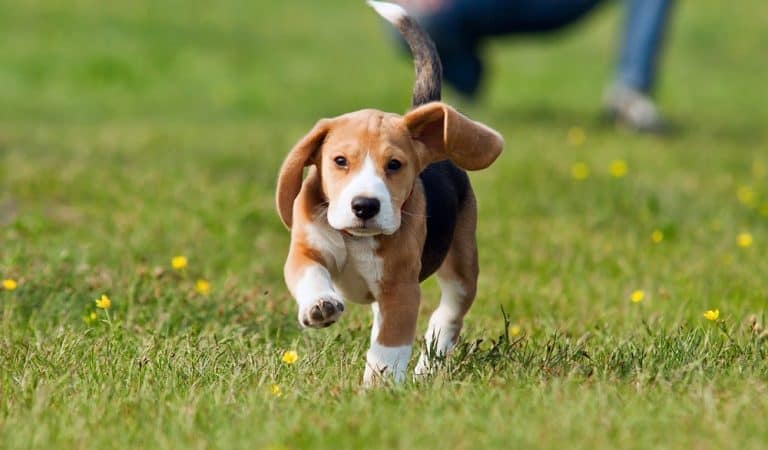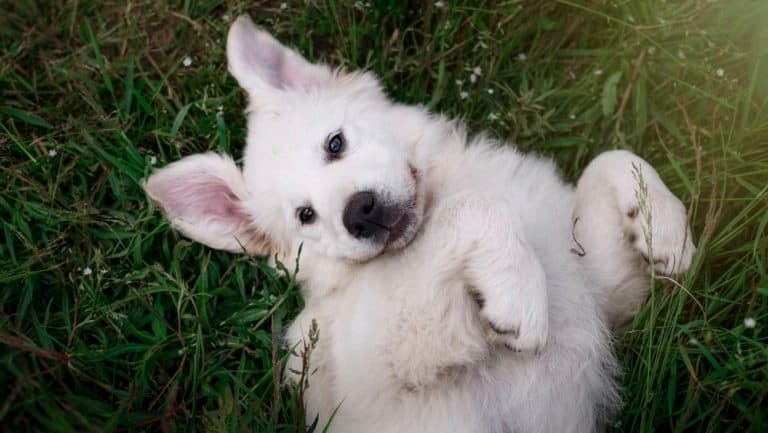Alaskan Malamute Growth Chart – Weight & Size Chart
Are you interested in owning an Alaskan Malamute puppy and wondering how big they will get when they are an adult?
Alaskan Malamutes are a larger breed and considered working dogs because of their strength and stamina.
So, how big are they? Typically, an adult Alaskan Malamute weighs around 75 and 85 pounds, stands at a height of between 23 and 25 inches, and reaches their adult size at around the ages of 18 months and 2 years.
You should expect the female Alaskan to be in the lower range while the male Alaskan in the upper range.
This article will give you information on the Alaskan Malamute growth chart, factors affecting their growth, and many more.
When Is An Alaskan Malamute Full Grown?
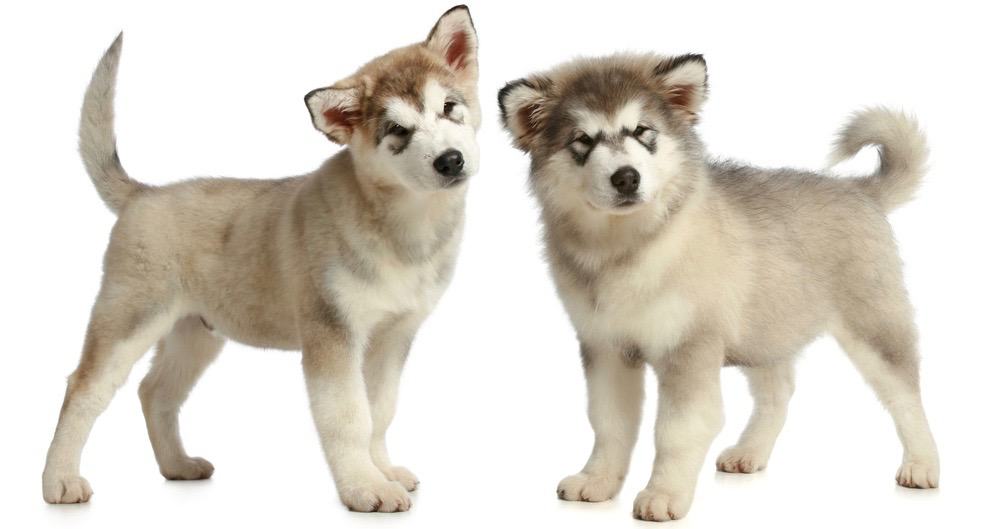
Are you wondering when your Alaskan Malamute will be fully grown? On average, an Alaskan Malamute is fully grown between the ages of 18 months and 2 years.
However, your Alaskan may grow slightly faster or slightly slower with females weighing about 10 pounds less than their male counterparts.
It may take around 5 years for Alaskan Malamute to mentally mature, but some may not mature at all.
Be ready for life with a perpetual puppy when your Alaskan does not seem to ever grow up. The upside is that you will always remain playful, fun, and entertained.
Alaskan Malamute Weight Chart
If it is the first time owning a dog, you may be worried that your Alaskan Malamute is not the right weight.
An Alaskan Malamute weight chart gives you an idea of the weight range your puppy should be according to their age. This will help you to keep track of their weight to make sure they are not overweight or underweight.
At 3 months old, a male Alaskan Malamute should weigh between 13.1kg (28 lbs.) and 15.1kg (33 lbs.).
When they are 6 months old, their weight ranges between 24.4 kg (53 lbs.) and 28.2 kg (62 lbs.) and when they reach their 1 year-mark, their weight is around 34.2 kg (75 lbs.) and 40.4 kg (89 lbs.).
When a female Alaskan Malamute is 3 months old, they weigh between 11.9 kg (26 lbs.) and 13.6 kg (29 lbs.).
At 6 months, they weigh between 22.3 kg (49 lbs.) and 25.4 kg (55 lbs.) and will weigh between 30.8 kg (67 lbs.) and 35.9 kg (79 lbs.) during their first birthday.
Alaskan Malamute Puppy Weight Chart
| Age | Weight in kg | Weight in lbs |
|---|---|---|
| 3 Months | 13.1 - 15.1 kg | 28.8 - 33.3 lbs |
| 4 Months | 16.8 - 19.7 kg | 37 - 43.4 lbs |
| 5 months | 21 - 24.1 kg | 46.2 - 53.1 lbs |
| 6 months | 24.4 - 28.2 kg | 53.9 - 62.2 lbs |
| 7 months | 27.2 - 31.1 kg | 60 - 68.5 lbs |
| 8 months | 29.5 - 34.3 kg | 65.1 - 75.6 lbs |
| 9 Months | 31 - 36.2 kg | 68.3 - 79.8 lbs |
| 10 Months | 32.4 - 38 kg | 71.4 - 83.7 lbs |
| 11 Months | 33.2 - 39.5 kg | 73.2 - 87 lbs |
| 12 Months | 34.2 - 40.4 kg | 75.4 - 89 lbs |
Alaskan Malamute Growth – What to Expect
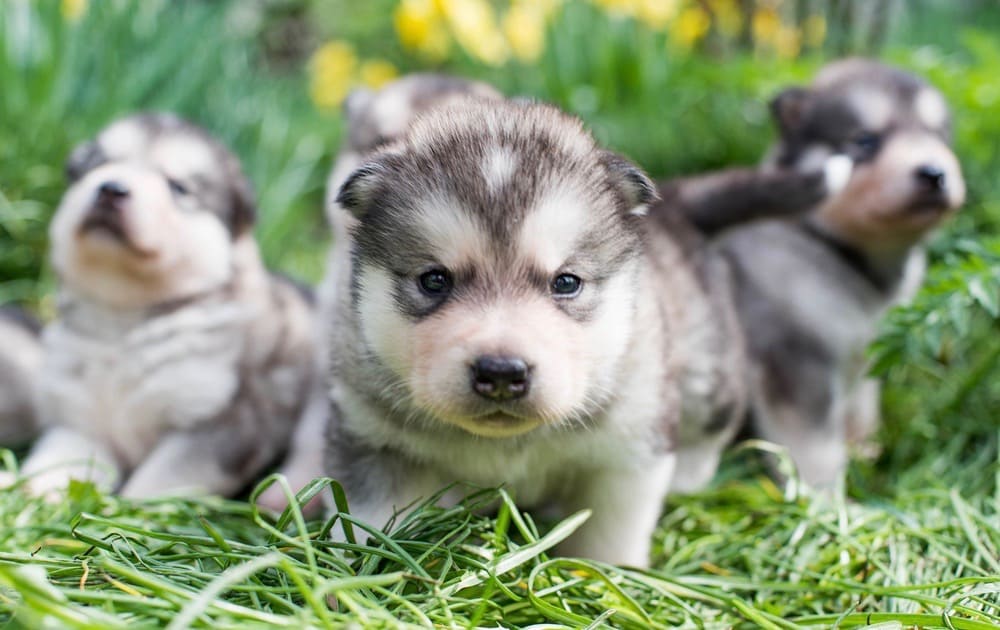
Birth – 2 Weeks
This is the neonatal stage, and your puppy is not able to hear, see, smell, or walk. They spend most of their time sleeping and eating.
During this stage, the puppy depends fully on the mother’s milk for nutrition.
They depend on the mother for defecating as the mother licks the puppy’s tummy to help them pee and defecate. They also depend on the mother for warmth because they cannot create their body temperature.
3 Weeks – 12 Weeks
This is the socialization stage, and the Alaskan Malamute starts seeing anyone in their environment as a family.
Therefore, it is important that you introduce them to other dogs and people and slowly expose them to the outside world.

During this stage, you can start training them basic things such as potty usage, obedience, and walking on a leash. This is because they respond well to positive reinforcement and are very curious at this stage.
4 Months – 9 Months
This is the adolescent stage and their puppy body and face start looking more like an adult Alaskan Malamute.
Patience is required at this age because your puppy has a curious temperament and is very energetic.
At this stage, your puppy is establishing their role in the pack, therefore, you must show them you are the pack leader.
Advanced training can be done during this stage because your puppy is more eager to learn.
10 Months – 18 Months
During this stage, your puppy is grown both physically and sexually, making it the right time for breeding.
Your puppy may now be interested in adventures and they may start hunting in the backyard to have a sense of achievement.
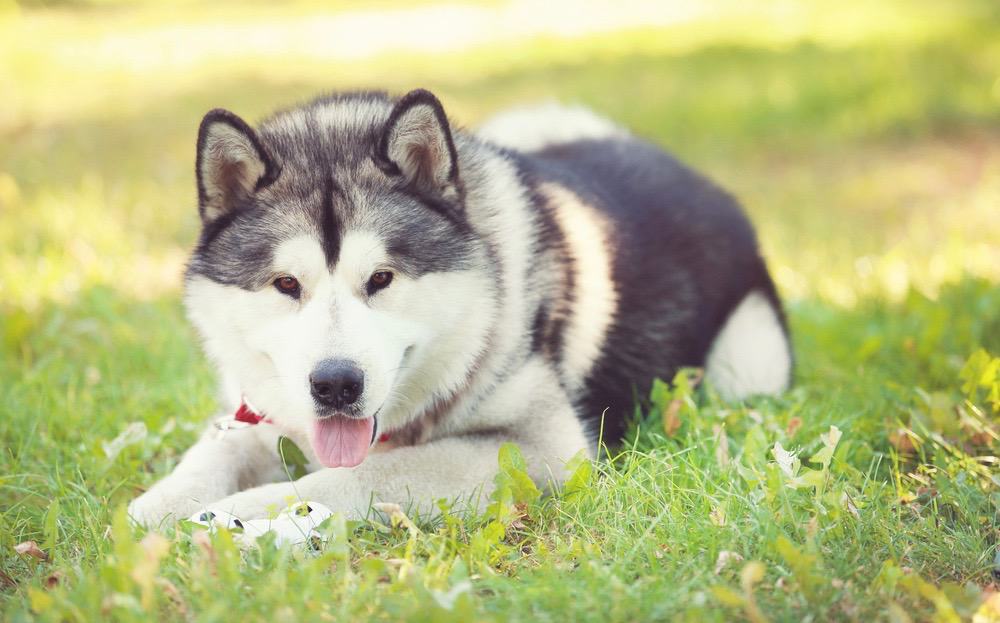
At this age, they are very energetic and active, hence the need for mental stimulation. Now is the perfect time to buy them puzzle toys and teaching them some tricks.
You can introduce them to simple sports that are not too hard on their bones to keep them busy.
Adult
Your puppy is now an adult, and it is time to take long walks and invest in rawhides. All they need is a routine, consistency, fun, predictability, and family care.
During walks, they will enjoy marking territories, sniffing, and are more reliable.
It is important that you give them regular exercise and reduce treats because most Alaskan Malamutes tend to gain weight at this stage.
Alaskan Malamute vs Husky Size
Size is the main thing that differentiates the Alaskan Malamute from the Husky. Even though both are big dogs, as an adult the Alaskan Malamute is larger than the Husky.
The Husky has an average height of between 20 and 24 inches. Male Huskies weigh between 45 and 60 pounds while female Huskies weigh between 35 and 50 pounds.
The average height of an Alaskan Malamute is between 23 and 25 inches. A female Alaskan Malamute weighs around 75 pounds while a male Alaskan Malamute weighs around 85 pounds.
How Big Will My Alaskan Malamute Puppy Get?
Have you just adopted an Alaskan Malamute puppy and wondering how big they will get when they are grown? When they are fully grown, female Alaskan Malamutes stand at about 23 inches at their withers and weigh around 75 pounds.

On the other hand, male Alaskan Malamutes have an average height of 25 inches at their withers and weigh about 85 pounds.
However, the best way to predict how big your puppy will get is to look at the parents. The physical traits of the parents are likely to be passed down to the puppy.
Taking good care of your puppy will ensure that they achieve their growth potential when they are adults.
Factors That Affect Alaskan Malamute Growth
The growth rate and size of an Alaskan Malamute can be affected by the following factors:
Genetics & Gender
Genetics and gender play an important role in determining the size of an Alaskan Malamute. If your puppy’s parents, aunts, and uncles are tall, chances are your puppy will be tall when they are fully grown.
On the other hand, if the parents and relatives are short, there is a high chance that your puppy will be short.
Female Alaskan Malamutes weigh less and grow smaller than male Alaskan Malamutes. However, it is possible to have a bigger female depending on bloodlines.
Nutrition
Your Alaskan Malamute needs to be given a high-quality diet in the right amounts depending on their age.
Overfeeding your puppy can lead to obesity which can cause serious health conditions as well as shorten your puppy’s life.

If your puppy is overweight, they are susceptible to joint problems such as hip and elbow dysplasia. This may need surgery and medication which can be expensive.
Physical Activity & Health
Originally, Alaskan Malamute was bred to be a working dog, so playing and running hard is in their nature.
They need a lot of exercise to grow properly and reach their full potential. However, ensure that the exercise you give to your puppy is appropriate for their age and size because too much work can affect their growth plates.
It is necessary that you discuss the appropriate amount of exercise for your puppy with your vet.
What If My Alaskan Malamute Is Not The Right Weight?
Are you wondering whether the weight of your Alaskan Malamute is right or not? Your puppy may be smaller than average because of several reasons including genetics, diet and eating habits, and too much exercise.
Genetics play a large role in the size of an Alaskan Malamute because physical features can be passed down from the parents.
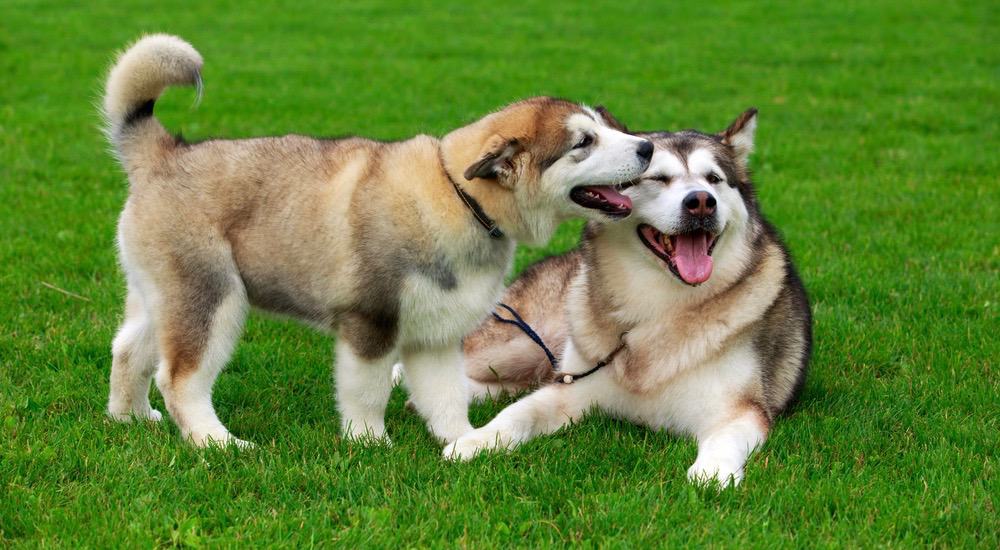
If your puppy is skipping their meals or eating a low-quality kibble, they may end up becoming underweight. Alaskan Malamute puppies need more resting and less exercise for optimal growth. Too much exercise can lead to stunted growth.
Your Alaskan Malamute could be overweight because you are feeding them more calories than they need and exercising less.
Ensuring that your puppy feeds on healthy, high-quality food and gets enough exercise will keep their weight in check as they grow.
If you suspect that there could be an underlying health condition affecting your puppy’s weight, visit your vet for advice.
What Is The Life Expectancy Of Alaskan Malamutes?
Alaskan Malamutes have an average lifespan of between 10 and 12 years. Their life expectancy can be affected by certain factors including exercise, diet, and health conditions.
The health problems that may shorten Alaskan Malamute life include hip dysplasia, cataracts, bloating, and thyroid issues.
Giving your puppy a healthy and balanced diet as well as providing them with the exercise they need will ensure that they live a long and healthy life.
Take your puppy to the vet for hip, eye, and thyroid examination so that early treatments can be administered in case there is a problem.
How Much Does It Cost To Own An Alaskan Malamute?
If you are looking to own an Alaskan Malamute, you need to consider the costs involved such as the initial cost of getting the dog, training, veterinary expenses, supplies, food, grooming, and many more.
The cost of an Alaskan Malamute puppy is between $500 and $2500. On average, you will be expected to pay about $975 to get one and after that monthly expenses can be around $154.
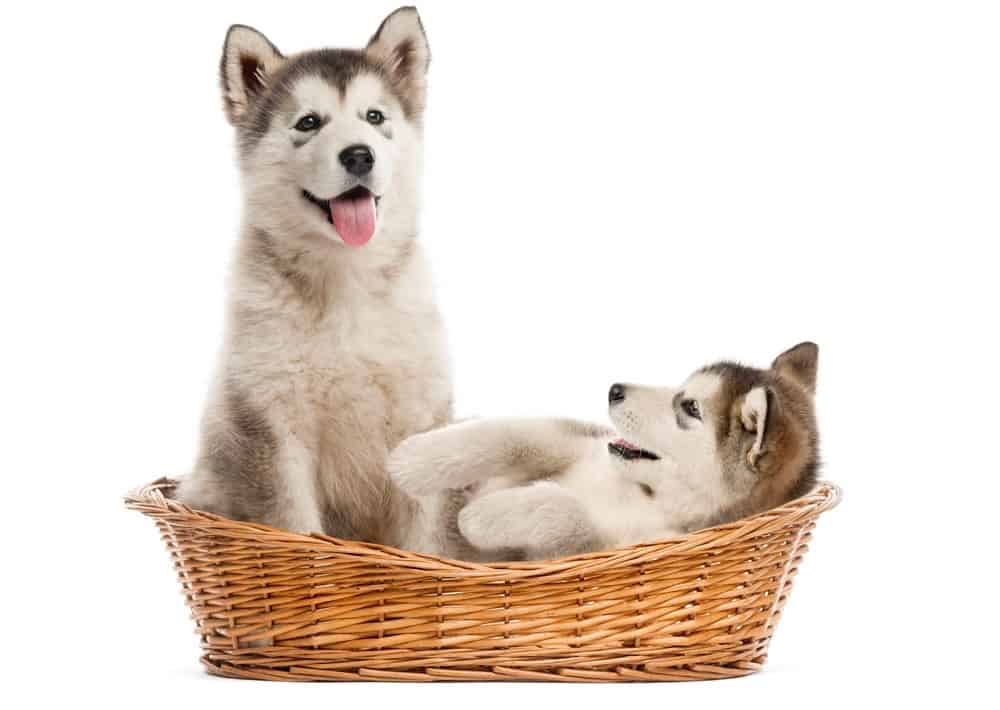
The monthly expenses do not include gastropexy procedures, dog walking services as well as spaying or neutering.
The cost of owning an Alaskan Malamute will be on the high end if you live in expensive areas or choose high-end services and products. However, for cheaper services, products, and areas, the cost is lower.
Alaskan Malamute Genetics nd Common Health Problems
The following are the common health problems that Alaskan Malamute are genetically predisposed as a breed:
Hip Dysplasia – this inherited disease is common in Alaskan Malamutes and it causes the improper formation of the hip joints leading to arthritis.
Early treatment is necessary to avoid pain and discomfort, however, in cases where hip dysplasia is considered life-threatening, surgery is required.
Dwarfism – this condition is considered abnormal and does not have treatment, but it means your Alaskan Malamute will have shorter legs than normal.
Bloat – normally, dogs with narrow and deep chests have a higher risk of getting bloated including the Alaskan Malamute.
Bloating occurs when your puppy’s stomach is filled with gas and if left untreated it can be fatal because there is less supply of blood to the stomach and even the spleen.
If you notice your puppy’s stomach is enlarged or they are acting restless, take them to the vet immediately.
Other health conditions include thyroid problems, peripheral neuropathy, eye problems, and epilepsy.
Final Words
Alaskan Malamutes are impressive dogs with the need to be around family and a desire for companionship.
They also require high exercise because of their active and energetic nature. Giving them healthy, high-quality, and balanced food will ensure that they grow to be healthy and happy dogs.


